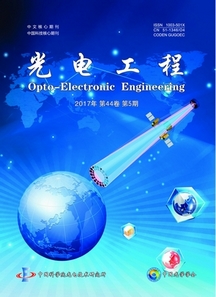2017 Vol. 44, No. 5
Large aperture glass lenses are used in traditional high resolution imaging, which are bulky, heavy, difficult to fabricate and costly. With the development of high resolution imaging satellites, the glass mirror faced a bottleneck: even for the current largest launch vehicle, traditional glass lenses are too large and too heavy to be launched. Numerous countries are seeking the solutions to these challenges.
The microstructure membrane optical imaging technique is based on the light diffraction. The micron-scale membrane is used as the primary lens of large aperture optical system. This kind of telescope is lighter, more convenient in transportation and more cost-effective, which can break the bottleneck of traditional optical imaging. Therefore, microstructure membrane becomes a research focus in realizing the large aperture optical system. Many countries have carried out researches of microstructure optical imaging technology. For example, the US Department of Defense Advanced Research Projects Agency (DARPA) supports Membrane Optic Imager Real-Time Exploitation (MOIRE). Instead of using traditional glass mirrors or lenses, MOIRE investigated to diffract light by Fresnel lenses made from a lightweight membrane. In 2016, Science used a figure of metalens consisted of the nano-antennas arrays as its coverpage. In this issue, a review paper overviews research progress of micro/nano structured membrane at home and abroad.
Machine vision is an important application of modern photoelectric measurement. The advantages of machine vision systems are that it can increase production flexibility and automation. In industrial production process, detection by machine vision can greatly improve production efficiency and automation. Machine vision is an important part of intelligent manufacturing Chinese strategic development. Three papers of this issue introduce research advances and applications of machine vision in automatic localization, optical processing and control, respectively.
Two papers propose a front-end module of the fast optical sensing system and the displacement sensor and a model to improve the calibration accuracy of star sensor. These systems can not only reduce the dependence on foreign technologies, but also promote the development of other related technologies and industry. Other two papers report a SHS interferogram correction scheme and a stable guidance strategy of the shipboard theodolite. In the last paper, a cloud model for several real color dots is proposed to direct extraction of 3D hairline.

-
{{article.year}}, {{article.volume}}({{article.issue}}): {{article.fpage | processPage:article.lpage:6}}. doi: {{article.doi}}{{article.articleStateNameEn}}, Published online {{article.preferredDate | date:'dd MMMM yyyy'}}, doi: {{article.doi}}{{article.articleStateNameEn}}, Accepted Date {{article.acceptedDate | date:'dd MMMM yyyy'}}
-
{{article.year}}, {{article.volume}}({{article.issue}}): {{article.fpage | processPage:article.lpage:6}}. doi: {{article.doi}}{{article.articleStateNameEn}}, Published online {{article.preferredDate | date:'dd MMMM yyyy'}}, doi: {{article.doi}}{{article.articleStateNameEn}}, Accepted Date {{article.acceptedDate | date:'dd MMMM yyyy'}}

 E-mail Alert
E-mail Alert RSS
RSS


